Trends in metallurgy
Information agency Credinform represents a review of activity trends among metallurgical enterprises.
The largest companies with the highest annual revenue (TOP 1000) were selected for the ranking, according to the data from the Statistical Register and the Federal Tax Service for the latest available periods (2011 – 2020). The selection and analysis of companies were based on the data of the Information and Analytical system Globas.
Net assets are total assets less total liabilities. This indicator reflects the real value of the property of an enterprise. When the company’s debt exceeds the value of its property, the indicator is considered negative (insufficiency of property).
The largest company in term of net assets is JSC MINING AND METALLURGICAL COMPANY NORILSK NICKEL, INN 8401005730, Krasnoyarsk territory, production of other non-ferrous metals. In 2020, net assets value of the company amounted to 462 billion RUB.
The lowest net assets value among TOP 1000 belonged to CHEBOKSARY INDUSTRIAL FOUNDRY LLC, INN 2127318422, the Republic of Chuvashia, steel casting. The legal entity was declared insolvent (bankrupt) and the bankruptcy proceeding was initiated on July 6, 2020. In 2020, insufficiency of property of the enterprise was indicated in negative value of -122 billion RUB.
Covering the ten-year period, the average net assets values of TOP 100 have a trend to decrease with a positive growth rate (Picture 1).
 Picture 1. Change in industry average net assets value in 2011 – 2020
Picture 1. Change in industry average net assets value in 2011 – 2020Over the past five years, the share of companies with insufficient property had a negative trend to increase (Picture 2).
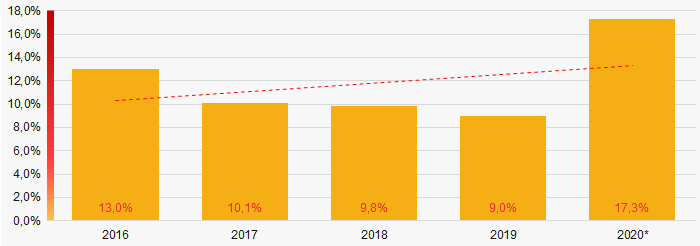 Picture 2. Shares of TOP 1000 companies with negative net assets value in 2016-2020
Picture 2. Shares of TOP 1000 companies with negative net assets value in 2016-2020Sales revenue
In 2020, the revenue volume of ten largest companies was near 54% of total TOP 1000 revenue (Picture 3). This is indicative of a high level of aggregation of capital.
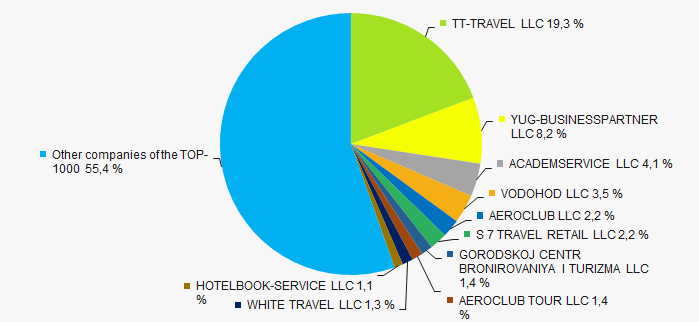 Picture 3. The share of TOP 10 companies in total 2020 revenue of TOP 1000
Picture 3. The share of TOP 10 companies in total 2020 revenue of TOP 1000In general, there is a trend to increase in revenue with the increasing growth rate (Picture 4).
 Picture 4. Change in industry average net profit in 2015 – 2020
Picture 4. Change in industry average net profit in 2015 – 2020Profit and loss
In 2020, the largest organization in term of net profit is JSC MINING AND METALLURGICAL COMPANY NORILSK NICKEL. The company’s profit exceeded 300 billion RUB.
Covering the ten-year period, there is a trend to increase in average net profit with the positive growth rate (Picture 5).
 Picture 5. Change in industry average net profit (loss) values in 2011 – 2020
Picture 5. Change in industry average net profit (loss) values in 2011 – 2020For the five-year period, the average net profit values of TOP 1000 have the increasing trend with the decreasing net loss (Picture 6).
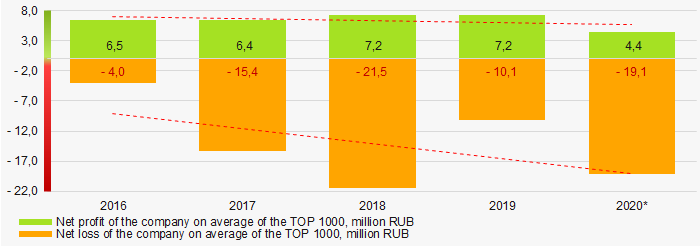 Picture 6. Change in average net profit and net loss of ТОP in 2016 - 2020
Picture 6. Change in average net profit and net loss of ТОP in 2016 - 2020Key financial ratios
Covering the ten-year period, the average values of the current liquidity ratio were within the recommended one - from 1,0 to 2,0 with a trend to decrease (Picture 7).
Current liquidity ratio (current assets to short-term liabilities) shows the sufficiency of company’s assets to repay on short-term liabilities.
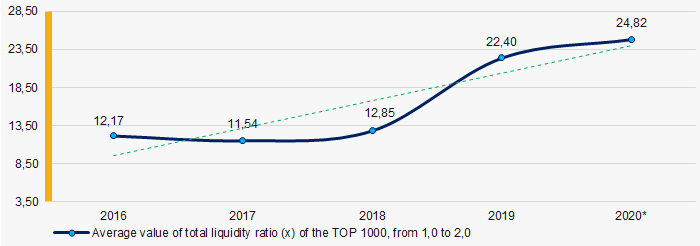 Picture 7. Change in industry average values of current liquidity ratio in 2011 – 2020
Picture 7. Change in industry average values of current liquidity ratio in 2011 – 2020Covering the ten-year period, the average values of ROI ratio had a trend to increase (Picture 8).
ROI ratio is calculated as net profit to sum of shareholders equity and long-term liabilities, and shows the return of equity involved in commercial activities and long-term borrowed funds.
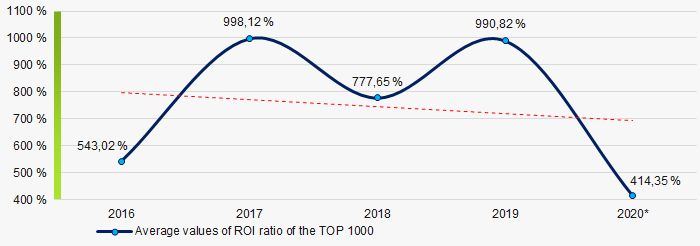 Picture 8. Change in industry average values of ROI ratio in 2011 - 2020
Picture 8. Change in industry average values of ROI ratio in 2011 - 2020Assets turnover ratio is the ratio of sales revenue and company’s average total assets for a period. It characterizes the effectiveness of using of all available resources, regardless the source of their attraction. The ratio shows how many times per year the full cycle of production and circulation is performed, generating the corresponding effect in the form of profit.
Covering the ten-year period, business activity ratio demonstrated the increasing trend (Picture 9).
 Picture 9. Change in average values of assets turnover ratio in 2011 – 2020
Picture 9. Change in average values of assets turnover ratio in 2011 – 2020Small business
76% of companies included in TOP 1000 are registered in the Register of small and medium-sized enterprises of the Federal Tax Service of the Russian Federation. In 2020, their share in total revenue of TOP 1000 is 2,4%, much lower than the average country values in 2018-2019 (Picture 10).
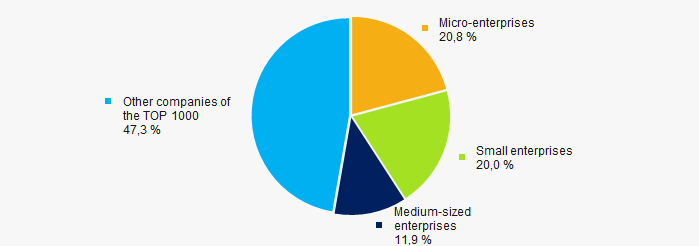 Picture 10. Shares of small and medium-sized enterprises in TOP 1000
Picture 10. Shares of small and medium-sized enterprises in TOP 1000Main regions of activity
Companies of TOP 1000 are registered in 71 regions of Russia, and unequally located across the country. 50% of companies largest by total 2020 revenue are located in Krasnoyarsk territory, Sverdlovsk region and Chelyabinsk region (Picture 11).
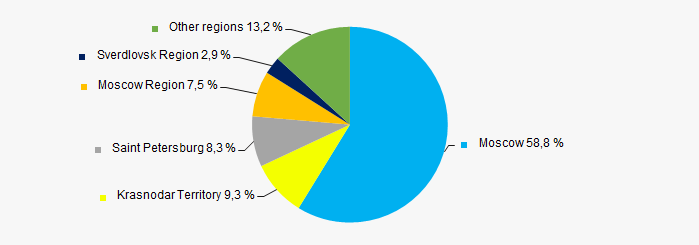 Picture 11. Distribution of TOP 1000 revenue by regions of Russia
Picture 11. Distribution of TOP 1000 revenue by regions of RussiaFinancial position score
Assessment of the financial position of TOP 1000 companies shows that the majority of them have average financial position (Picture 12).
 Picture 12. Distribution of TOP 1000 companies by financial position score
Picture 12. Distribution of TOP 1000 companies by financial position scoreSolvency index Globas
Most of TOP 1000 companies got Superior / High and Strong / Medium indexes Globas. This fact shows their limited ability to meet their obligations fully (Picture 13).
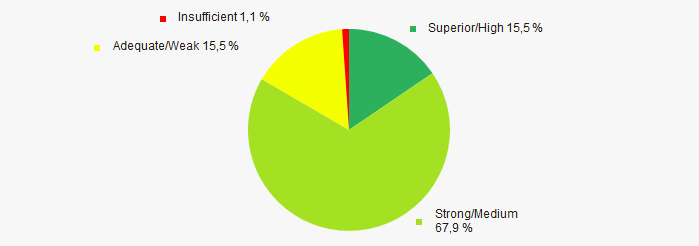 Picture 13. Distribution of TOP 1000 companies by solvency index Globas
Picture 13. Distribution of TOP 1000 companies by solvency index GlobasConclusion
Complex assessment of activity of metallurgical enterprises, taking into account the main indexes, financial ratios and indicators, demonstrates the prevalence of positive trends in 2011 - 2020 (Table 1).
| Trends and evaluation factors | Relative share of factors, % |
| Dynamics of the average net assets value |  -10 -10 |
| Rate of growth (decrease) in the average size of net assets |  10 10 |
| Increase (decrease) in the share of enterprises with negative values of net assets |  -10 -10 |
| Level of competition / monopolization |  -10 -10 |
| Dynamics of the average revenue |  10 10 |
| Rate of growth (decrease) in the average size of revenue |  10 10 |
| Dynamics of the average profit (loss) |  10 10 |
| Rate of growth (decrease) in the average profit (loss) |  10 10 |
| Growth / decline in average values of companies’ net profit |  10 10 |
| Growth / decline in average values of companies’ net loss |  10 10 |
| Increase / decrease in average values of total liquidity ratio |  -5 -5 |
| Increase / decrease in average values of return on investment ratio |  10 10 |
| Increase / decrease in average values of asset turnover ratio, times |  10 10 |
| Share of small and medium-sized businesses in terms of revenue being more than 20% |  -10 -10 |
| Regional concentration |  -10 -10 |
| Financial position (the largest share) |  5 5 |
| Solvency index Globas (the largest share) |  10 10 |
| Average value of relative share of factors |  2,9 2,9 |
 positive trend (factor),
positive trend (factor),  negative trend (factor)
negative trend (factor)
Legislation amendments
The Decree of the Government of the Russian Federation No. 529 as of 02.04.2021 for the sources of credit histories defined the procedure for disclosing information on persons under the sanctions imposed by foreign states.
In particular, it is established, that the sources of credit histories (banks, leasing companies, operators of investment platforms) are not required to submit to the Bureau of Credit Histories data contained in the credit histories on obligations and persons under the sanctions imposed by foreign states, associations and unions or (inter)state institutions of foreign states.
The basis for this are the statements of these persons and verification of the accuracy of the information specified in these statements.
The specified sources of credit histories are obliged to inform the Bureau of Credit Histories within five working days from the date of confirmation of the statement on obligations not fulfilled on the date of receipt of the application.
The Decree will come into force on January 1, 2022.
According to the Central Bank of the Russian Federation as of 30.04.2021, nine entities are registered in the National Bureau of Credit Histories. Information about these companies is available in the Information and Analytical system Globas.